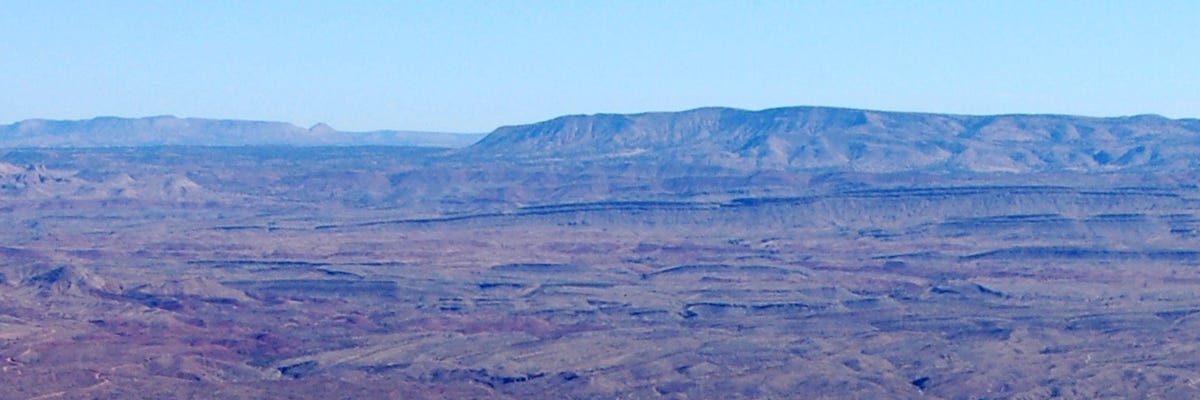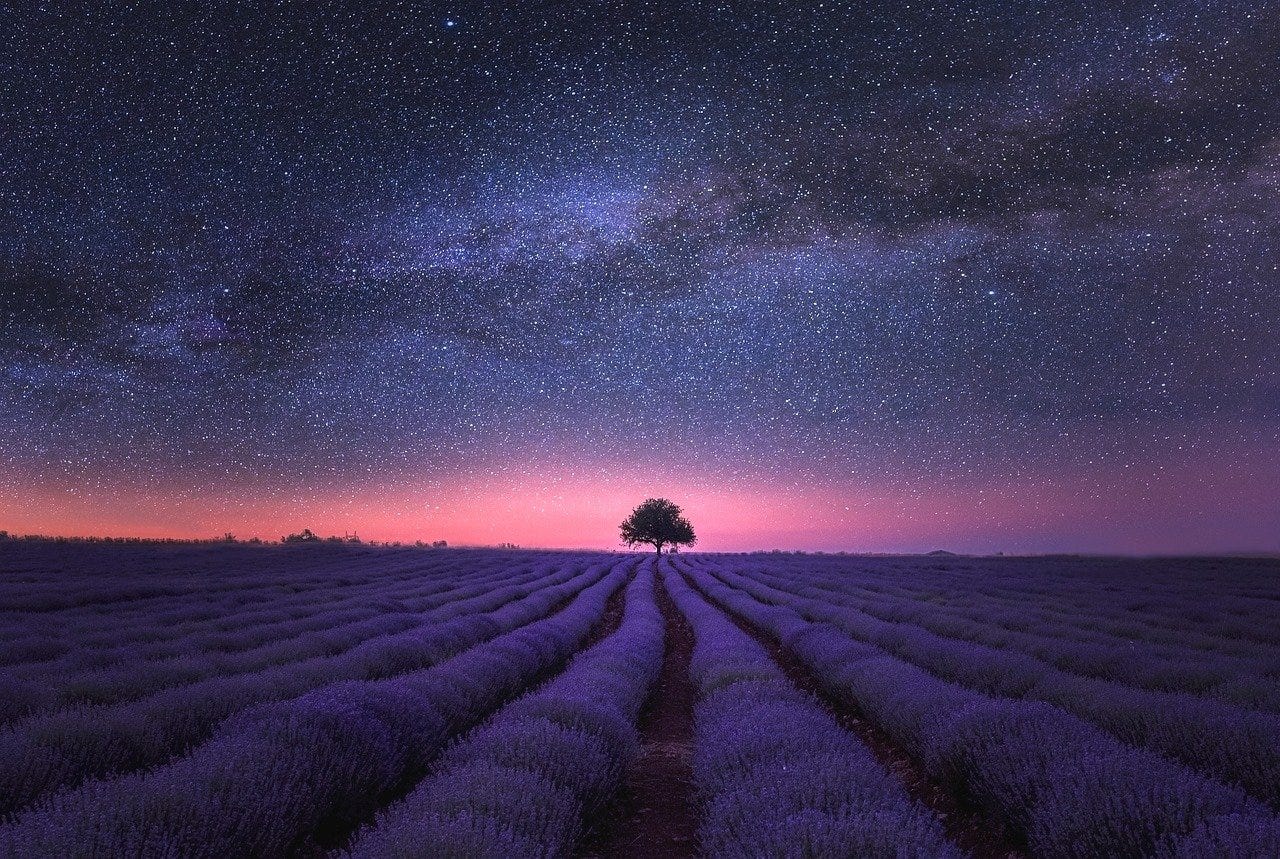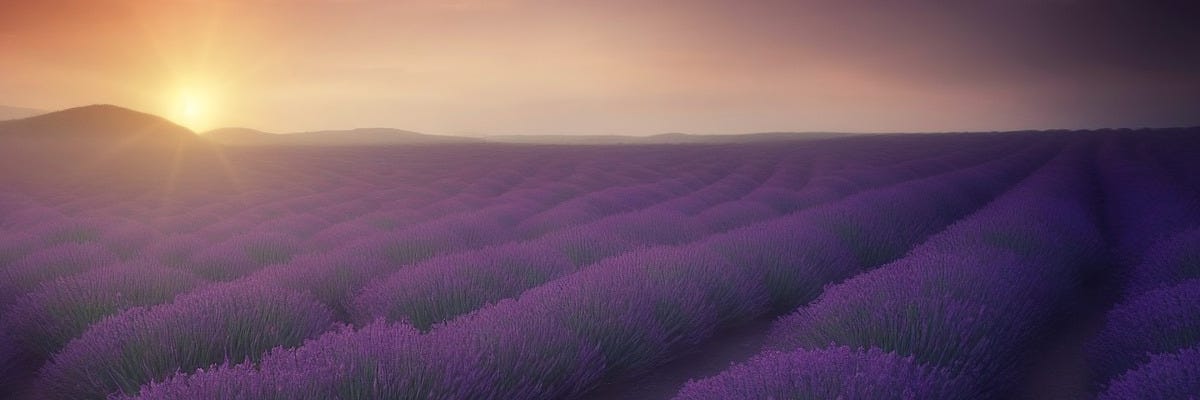Valensole : when military police investigated a close encounter case
The story of one of the most investigated close encounters in history
The facts
At around 5:45, on July 1, 1965, farmer Maurice Masse went to one of his lavender fields at around 5:30 in the morning. He sat down against a pile of stones to smoke a cigarette. That's when he heard a strange whistling sound. Looking for the source of the noise, he spotted an object "the size of a Dauphine car" in his field, "matte in color" and "shaped like a rugby ball".
Thinking at first that it was thieves, coming to cut lavender in the middle of the night, he approached the area. In fact, the farmer had noticed some damage to his field the previous week.
It was then that he spotted two entities facing each other, each on one side of a lavender plant. He described them as non-human, about 1 meter high. He began to move closer until he was about 7 meters from the two entities, but one of them noticed his presence. Jumping up, one of the entities grabbed an object and pointed it at the farmer, paralyzing him in the process.
Frozen in place, but still conscious, Mr. Masse observed the two entities for several minutes. The two beings seemed to be communicating with each other and "laughing" at their witness. They then returned to the interior of the object, which took off without any noise nor raising dust.
The object then disappeared "faster than a jet plane". Mr. Masse's paralysis persisted for some fifteen minutes before gradually disappearing. He continued to work in his field for two hours before returning home.
The Gendarmerie investigation
Afterwards, Maurice Masse told only his wife and Mr. Moisson, owner of the village café, about his sighting. The latter two quickly recounted his story, which soon attracted the attention of the Gendarmerie.
Summoned the next day, the farmer gave an initial version of his story, omitting certain elements for fear of being considered insane. One of the main pieces of information he did not mention in his first July 2, 1965 report was the fact that he seemed to be dealing with non-human entities. He described them as "men", "with European-type skin color". He also made no mention of having been paralyzed.
As the news spread around the village, many people went to the scene of the encounter before the gendarmerie, unwittingly erasing some of the traces of the device.
At 9pm on July 2, the gendarmes visited the site and observed traces on the ground at the supposed landing site. Several 8 cm wide and 2 m long grooves were observed all around a 18 cm wide and 40 cm deep hole. All in a 1m20-in-diameter bowl. Several oblong cavities were also observed at the bottom of the hole, extending out to the sides, the inside of which was as smooth as glass.
The gendarmes returned the next day at 8am to continue their observations and take photographs in daylight. While the soil in the field was loose, that at the supposed landing site was compact.
On August 18, 1965, Maurice Masse returned to the gendarmerie to modify his testimony and give many more elements and details.
Entities and object
The main difference between the two minutes lies in the level of detail given by Maurice Masse. In the statement of August 18, the witness no longer speaks of "men", and specifies that these entities do not seem human to him. He gives a full description of the beings:
Less than a meter tall.
A pumpkin-shaped head with a volume 3 times that of a normal man.
Fairly large ears.
No chin.
A round hole instead of a mouth.
Human-like eyes, but without eyebrows.
A large, hairless skull.
Smooth, beardless skin.
A build barely larger than their heads.
Two arms and two legs.
Each wearing a full dark jumpsuit and two belt holsters.
Similarly, the object carrying these entities will be given a more detailed description:
Rugby ball-shaped object, about the size of a car.
Dark, matte color.
A sliding door on the side.
A transparent part on top revealing occupants.
"Standing on 6 legs".
A steel-colored pivot in the center.
On take-off, the central pivot provided the impetus, and the 6 legs all seemed to rotate in the same direction around the aircraft.
The fallout
The story made enough headlines for the national and even international press to take an interest (the Washington Post ran an article on July 5), despite Maurice Masse's desire to keep a low profile. As a result, he found himself in the spotlight.
The case was even featured on Guy Tarade's television program "Les dossiers de l'écran" on December 10, 1969.
Several investigators and organizations came to the region in an attempt to unravel the mystery of the case. All this activity soon led Mr. Masse to withdraw into silence, mentioning the case only in rare circumstances.
This observation also left its witness with a number of side-effects. The farmer suffered from hypersomnia as a result of this close encounter. Whereas he would normally sleep for only 6 or 7 hours, he found himself sleeping between 10 and 12 hours a night, his wife being forced to wake him up.
Similarly, he stopped wearing a watch, as it would constantly get out of sync on contact with his skin.
The landing site also suffered damage. Several almond trees around the site turned yellow on the side close to the aircraft, as if they had been subjected to intense heat.
Even more curiously, nothing grew in an 8m diameter for 10 years. These two elements led astronomer and ufologist Pierre Guérin to deduce that this was the result of “Foucault currents” due to strong electromagnetic radiation.
Other investigations
A number of organizations subsequently investigated the Valensole case. Among them was GEPA, a French association founded in 1962 by René and Francine Fouéré, bringing together French scientists and military personnel.
Maître G. Chautard, then a magistrate at the Lyon Court of Appeal and a member of GEPA, conducted his own investigation and concluded that Mr. Masse was honest in his testimony and that he had been "the object of an unusual and, it would seem, extraterrestrial visit".
The Ouranos Commission also took an interest in the case. One of its members, Henri-René Guieu, broke his pocketknife trying to recover samples from the supposed landing site, as the ground was still extremely hard.
One hypothesis put forward by some journalists (articles published in "Le Méridional" and "Le Monde") was that Maurice Masse had mistaken the UFO for a helicopter. Indeed, at the time, a series of military exercises were taking place in the area. The farmer took exception to this theory, retorting that "the machine had neither rotor nor blades. I've got the pretension of knowing how to recognize a helicopter. It wasn't a helicopter. I'm positive! The cabin was oval-shaped, but I never said it was a flying saucer.”
What's more, the witness was accustomed to seeing helicopters land in his field and to interacting with the pilots on a regular basis. As is so often the case, this attempt at a prosaic explanation shows a lack of intellectual honesty, seeking only to explain the sighting quickly without attempting to find an origin for the secondary effects suffered by Mr. Masse or even simply for the various traces on the ground.
In 1999, the COMETA report also revisited the case, offering a possible explanation for the paralysis described by the witness. The hypothesis was that Maurice Masse could have been the victim of an "analogous pulsed microwave effect", corresponding to certain "anti-personnel microwave" weapon systems developed for the army.
Based on the gendarmerie investigation, the COMETA team concluded that "despite some contradictory elements in Maurice Masse's account, the evidence gathered by the two gendarmerie brigades confirms the plausibility of the facts, in particular the effects on the environment and on the witness himself, who for several months slept twelve to fifteen hours a night as a result of the paralysis he had suffered", and that there are no "particular elements to suggest that he was a mythomaniac or that a hoax was being set up".
Formed in 1977, GEPAN gathered together several testimonies and documents on the Valensole case, but did not carry out a full investigation, as the institute felt it "would probably not have been very fruitful given the length of time since the event". Nevertheless, with the various investigations and elements accumulated on this case, GEPAN categorized it as a "D", the highest level of strangeness in the institute's classification system.
Maurice Masse was subsequently interviewed by several ufologists, including Aimé Michel and Jacques Vallée.
Academician Yves Rocard, the father of the French atomic bomb, also spoke at length about the Valensole case.
It would seem that Jacques Vallée and Marie Thérèse de Brosse were the people who conducted the most thorough interview with Mr. Masse, who agreed to tell them all about his observations, on their promise not to reveal anything. So the mystery remains.

UFOs and Nukes
Since Robert Hastings' book "UFOs and Nukes" studied the link between the development of atomic energy and UFO activity, it's hard to ignore the relationship between nuclear power and the phenomenon today.
Also this year, the SCU (Scientific Coalition for UAP study) issued a statistical study on the number of sightings around nuclear facilities. Based on reports of sightings between 1945 and 1975, the study concludes that one of the most likely explanations for UFO activity is the monitoring of global atomic weapons development.
With all this in mind, it's interesting to note that the Valensole plateau, where Mr. Masse's close encounter took place, is just a 30-minute drive from the CEA (French Atomic Energy Commission) center in Cadarache.
The facility was inaugurated two years before the event, on May 30, 1963, with the initial aims of studying naval nuclear propulsion for submarines, as well as the development of fast neutron reactors.
Also noteworthy was the announcement, 2 months before Mr. Masse's comment, of the creation of the Plateau d'Albion military base, located 70 km from Valensole. The aim of this base was to be the only nuclear firing site on French territory. Until 1963, the Plateau de Valensole was still being considered as a site for the base's construction, before the Plateau d'Albion was finally chosen.
The base was definitively closed on September 16, 1996, but the area remains a "hot spot" for UFO sightings in France to this day. A number of scandals subsequently erupted concerning pollution and irradiation of the site's employees.
It's also important to note that lavender is one of the most "radio-accumulating" organisms, absorbing large quantities of radiation in the event of radioactive pollution.
In this context, it is possible to find an interpretation for Maurice Masse's observation. The two entities observed by the witness collecting samples from his lavender shoots to "perhaps" monitor soil and environmental contamination from nearby nuclear studies.
Indeed, this hypothesis could explain the fact that several lavender plants had disappeared in the preceding days, not torn up but carefully cut or broken.
All this, of course, is purely speculative.

Similarities with other cases :
What's interesting about the Valensole case is the similarities with other sightings and Close Encounters, notably the Socorro case.
On April 24, 1964, police officer Lonnie Zamora was chasing a hit-and-run driver when he noticed a huge flame in the desert. Giving up the chase, he approached the area, eventually observing an egg-shaped object on the ground, with what appeared to be two small people in white jumpsuits moving around it.
Thinking at first that it was a car accident, he moved closer to the object until he was spotted by one of the two "people". Frightened, the officer ran off, heard a deafening noise and saw the object take off vertically before rapidly moving away from the area.
Several marks on the ground were noted, as well as burns on bushes that were close to the object.
While the course of the sighting is quite similar, there are several differences. Mr. Masse speaks of a whistling sound and a thud as the aircraft landed and then took off, while Mr. Zamora speaks of a deafening din.
Likewise, Mr. Masse's testimony, unlike that of Mr. Zamora, reveals no visible flames. The behavior of the beings seen is similar in both cases, the difference being that Mr. Zamora is not paralyzed, the entities ascending at full speed into the object.
And finally, although ground traces were present in both cases, their configuration differs, perhaps suggesting two different aircraft.
Ufologist Aimé Michel commented at the time on the Valensole case: "If the witness invented the thing, it's entirely consistent with what we already know, in particular an observation made on April 24, 1964 in the United States, where a craft of the same type was seen in the Socorro region of New Mexico.”
In any case, numerous sighting reports mention ovoid objects, which seem to be a fairly common form in UFO sightings, even as recently as Eric Taber's testimony about an object recovered by the CIA in the 1980s.
The Maurice Masse legacy:
Almost 60 years after the event, Mr. Masse's close encounter remains a mystery known the world over. Despite dozens of different investigations, no final explanation has yet been found.
In 2024, Dominique Filhol will present his new film "Valensole", which traces the consequences Mr. Masse had to face following this close encounter.
The director, a guest on "The UAP show", described how he had become aware of a multitude of strange occurrences in the Valensole region. During his research for the film, he heard several accounts of close encounters from locals who chose not to talk openly about them, like Mr. Masse, preferring to avoid the media notoriety and stigma that would follow.
In any case, we'll certainly never know the whole truth about this case, Maurice Masse having decided to keep part of his experience secret, explaining to journalist René Pacaut in 1972: "I can't say everything I've seen. Nobody would believe me."
In all the years following his experience, the farmer would never go back on his statements to admit to a potential hoax. Despite media pressure, which could have prompted him to declare it a false story simply to be left alone, Mr. Masse remained true to his statements. He never sought to monetize his experience, although he was invited to take part in several conferences around the world to share it, something he refused each time. The farmer passed away on May 14, 2004.
Maurice Masse soon left it to Maurice Chaspoul to tell his story to the curious. President of "Mémoire Vivante” (french for Living memory), an association dedicated to preserving the heritage of the Valensole commune, Mr. Chaspoul declared in Dominique Filhol's documentary "OVNIs une affaire d'états" :
"He said - and that’s a phrase I'll never forget: 'In their eyes, I read kindness.’ Well, for me, that sums up the whole story. You don't make something up like that.”
Translated from French by Guillaume Fournier Airaud
This work is licensed under CC BY-NC-ND 4.0





